The capital city of Ukraine is Kyiv. It’s also the largest and most populous city in Ukraine. The city’s name is said to come from the name of one of the city’s founders, Kyi.
While you may find references to the city that spell the city name as “Kiev,” this is not the preferred spelling. In the Ukrainian language, the city is spelled Київ, of which “Kyiv” is the proper English transliteration. “Kiev” is a transliteration of the Russian word for the city, Киев. The distinction is important, especially to many Ukrainians, because of the relationship between the two countries and the identity of Ukraine as an independent nation.
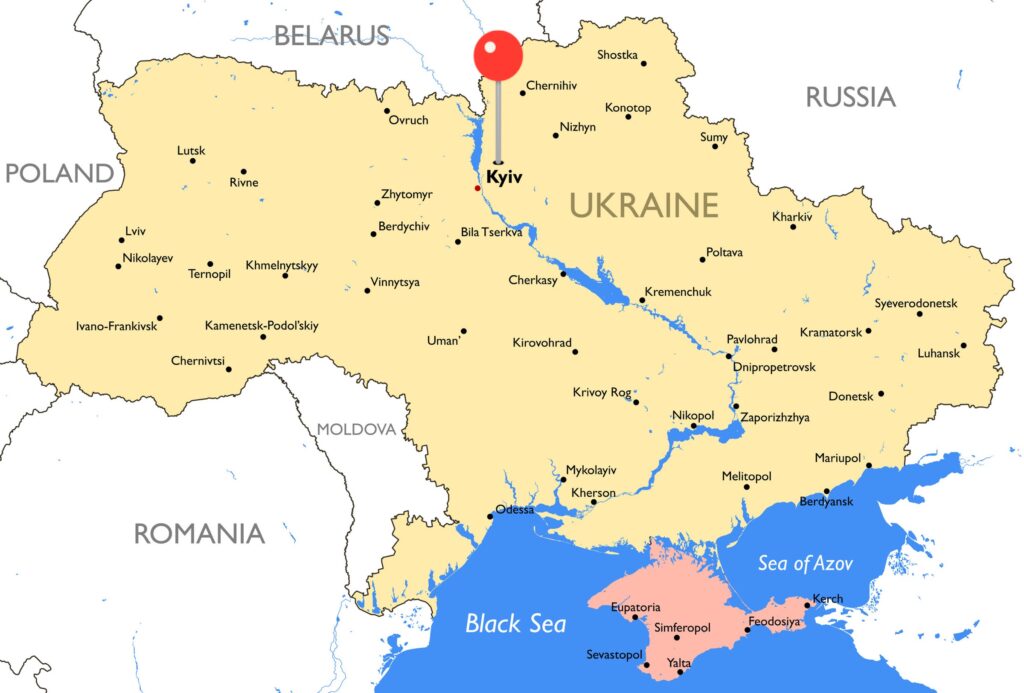
Kyiv may not be the best-known European capital, but it is a city with a rich history, impressive architecture, plenty to see, and amazing people. In this post, we’ll explore some important events in the city’s past, some features that make Kyiv unique, and how the current Russian invasion of Ukraine is affecting the capital city.
History of Kyiv, Ukraine’s Capital City
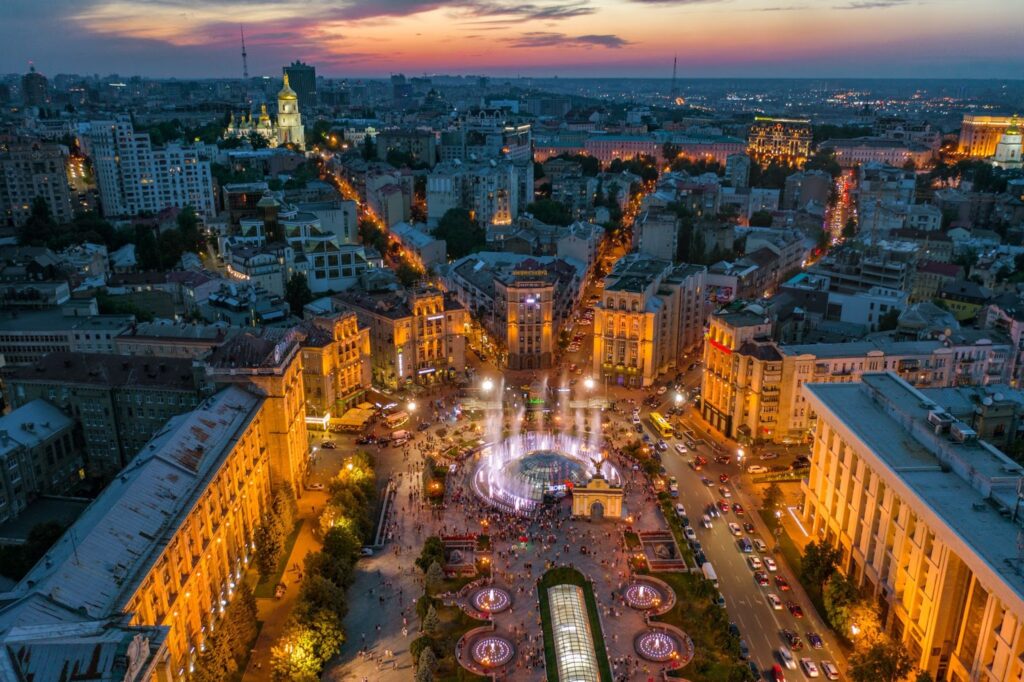
The city of Kyiv is one of the oldest in Eastern Europe, existing as a commercial center in the region as early as the 5th century. In the many years before the 20th century, control of the city of Kyiv changed hands a number of times, often violently.
It first became the capital of the Ukrainian People’s Republic (UPR) from 1918-1920, until it came under the control of Soviet Russia as a city of Soviet Ukraine, where it again became a capital city in 1934.
During this period as the capital city of Soviet Ukraine, the city suffered massive damages and casualties during World War II. The city was occupied by Nazi Germany from September 1941 until November 1943, during which many important buildings were destroyed and hundreds of thousands were killed or captured. Despite such heavy losses and damage during the second World War, Kyiv was rebuilt relatively quickly and was able to recover economically.
After the collapse of the Soviet Union, Ukraine claimed full independence as a sovereign nation on August 24, 1991, and Kyiv remained the capital city. In the 21st century, Ukraine has continued to face threats on its independence by neighboring Russia.
In 2014, Russia illegally annexed the peninsula of Crimea from Ukraine, which signaled the beginning of the ongoing Russo-Ukrainian war.
Russia initiated a full-scale invasion of Ukraine at the end of February 2022, and has been launching repeated attacks on the city of Kyiv and many others throughout the country.
Features of Kyiv
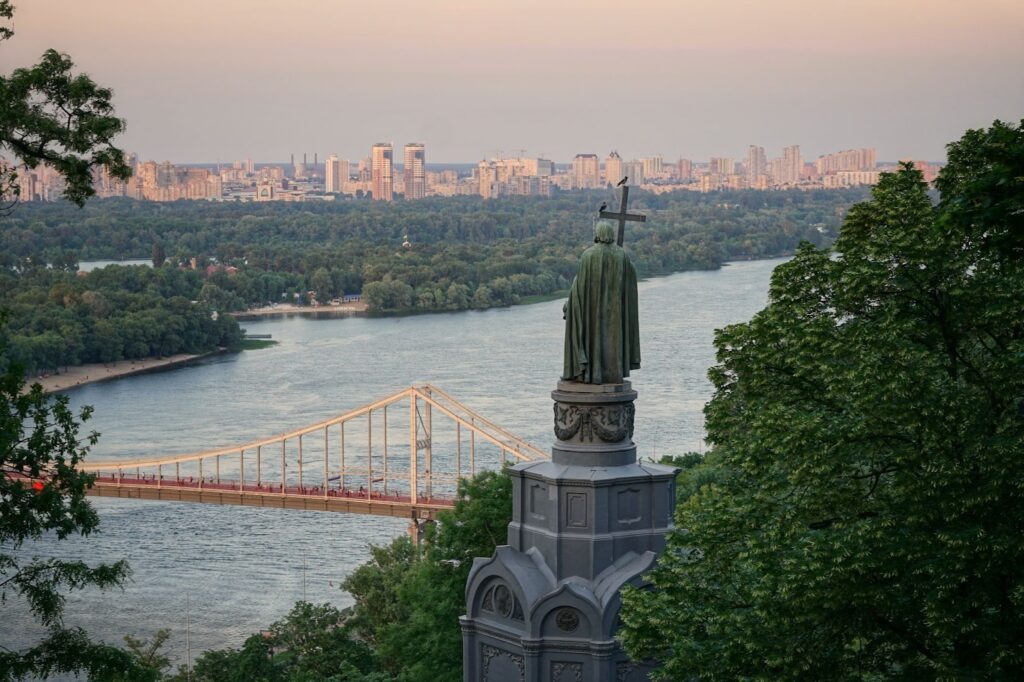
At the start of 2021, Kyiv had a population of 2.96 million people. This makes it the most populous city in Ukraine and the seventh-most in all of Europe. The city is located in the northern central region of the country, and the Dnieper River runs through it.
Climate of Kyiv
Kyiv has a moderate continental climate, characterized by hot summers and cold winters. The seasons of spring and autumn are short but generally consist of pleasant weather. June, July, and August are the hottest months, with an average daily high of around 25°C. December, January, and February are usually the coldest months, with average daily high temperatures hovering around 0°C.
While these are the averages, it’s not uncommon for temperatures to exceed 30° in Kyiv during the summer, and for them to drop below -6° during the winter.
Languages of Kyiv
The official language of Ukraine is Ukrainian, and this is spoken alongside Russian as the two most spoken languages in the capital city of Kyiv. There is a history of Ukrainians preferring to speak Russian in the public sphere because it was considered to be more sophisticated, but this is changing.
Since the Russian annexation of Crimea in 2014, there has been a nationalistic push for more Ukrainians to speak the country’s official language instead of Russian. Native speakers of Ukrainian are more likely to also speak Russian than native Russian speakers are to speak Ukrainian. Although these two languages are not mutually intelligible, conversations will sometimes happen in both languages if each speaker can understand each language.
Other languages spoken in Kyiv don’t account for nearly as many speakers, but they are quite diverse. It’s possible to hear residents of the city speaking in Belarusian, Polish, Armenian, and Azerbaijani, among several others. During times of peace, Kyiv also sees tourists and students from many countries around the world.
Religion of Kyiv
The majority of residents in the Ukrainian capital describe their religion as Orthodox Christianity. This is true even though religion was discouraged by officials while the country was under Soviet rule until 1991. During this period, there were few people who continued to attend church regularly, and the number of publicly declared non-believers grew significantly. Today there are also populations of Protestants, Jews, and Muslims, although these groups are in the minority within the city.
Architecture of Kyiv
For architecture buffs, there’s a lot to enjoy in Kyiv. The city’s buildings are extremely diverse, mainly because of the city’s journey through a wide range of different architectural styles throughout history. A keen eye will be able to spot more than 30 architecture styles, such as Baroque, classical, Soviet, Art Nouveau, and Postmodern, just to name a few.
Mansions, churches, theaters, monuments, and universities are just some impressive examples of architecture to be found in this capital city. It is possible to experience many building styles just by walking around the city center on foot.
Places to Visit in Kyiv
Despite its relatively small size for a capital city, there are a number of famous landmarks and places to see in Kyiv. One advantage of the city’s size is that most of these places are located nearby from each other.
Unfortunately, many of Ukraine’s historical landmarks and places to see are at risk of damage or destruction due to the Russian invasion of the country. Precautions are being taken in Kyiv in an effort to prevent unnecessary destruction.
Maidan Nezalezhnosti
This site is often referred to as Independence Square in English, and it is the central square in Kyiv. It is certainly one of the most recognizable places in the capital city, and it features the Independence Monument.
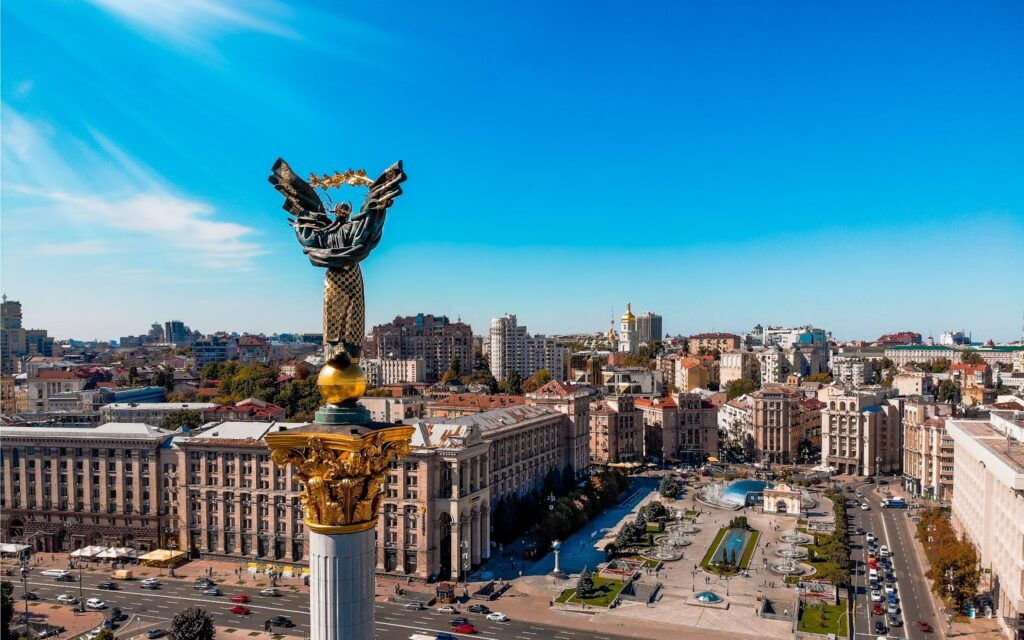
The square is also renowned for being the site of several political rallies and protests that have taken place since the Ukrainian independence movement began in 1990. It’s a strong symbol of independence in Ukraine and is currently surrounded by barricades of sandbags in the face of Russian military advancement on the city (as of 17 March 2022).
Kyiv-Pechersk Lavra
Called the Monastery of the Caves in English, it is an important religious and historical site in the city of Kyiv. It is one of Ukraine’s seven UNESCO World Heritage Sites and has been a significant center for Eastern Orthodox Christianity since its foundation in 1051.
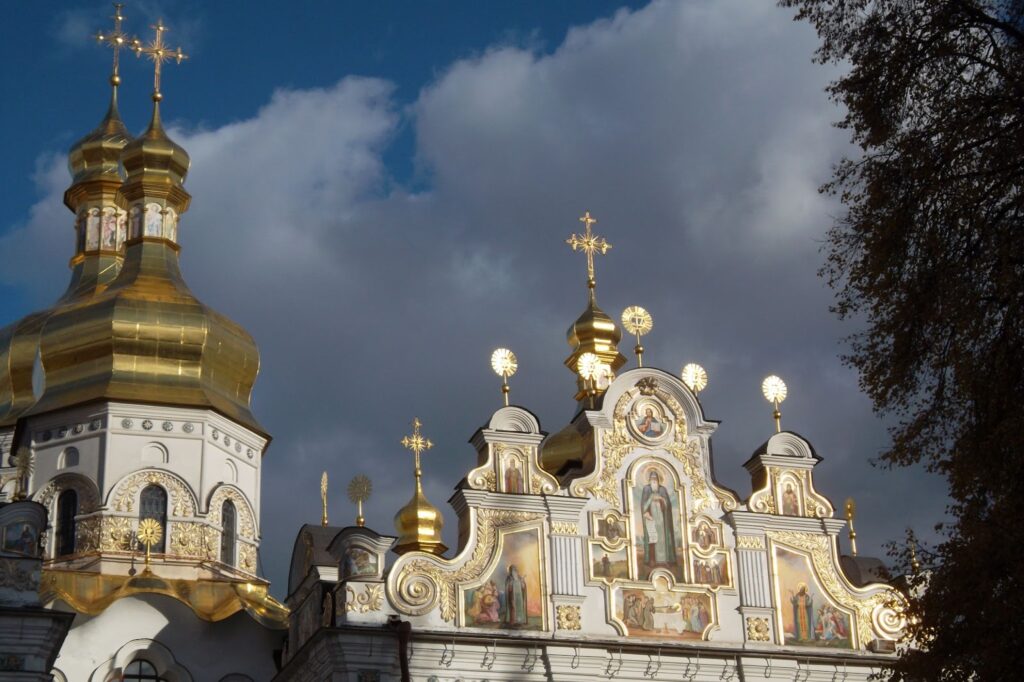
This monastery complex includes a large underground section of caves that are full of important religious items as well as mummified monks. The complex is still active today, with monks residing.
Saint Sophia Cathedral
This is another of the most iconic landmarks in Ukraine’s capital. Its construction began toward the beginning of the 11th century and took around 20 years to complete.
Since its foundation, the cathedral has seen its share of damages due to a Mongol invasion in 1240 and during the 16th century while Polish-Lithuanian Commonwealth attempted to join the Catholic and Orthodox churches.
The church was eventually rebuilt, only to be threatened with destruction during the Soviet anti-religious campaigns of the 1920s. It survived destruction, but it was turned into a historical museum by Soviet authorities in 1934. The cathedral is currently a secular museum of Christianity in Ukraine and is mostly visited by tourists.
Given its proximity to the Security Service in Ukraine (a potential target for the Russian military), there are fears that the cathedral could once again sustain significant damages due to the 2022 Russian invasion.
National Art Museum of Ukraine
This is the oldest museum in Kyiv, dating back to 1899. The pair of lion sculptures at the doors of this building inspire some to refer to it as the “museum of lions.” On the inside, you’ll find almost 40,000 exhibits of important Ukrainian artwork.
Motherland Monument
The Motherland Monument stands an impressive 62 m / (203 ft) tall and is made of stainless steel. It’s located on top of the Ukrainian State Museum of the Great Patriotic War, on the bank of the Dnieper River that runs through Kyiv.
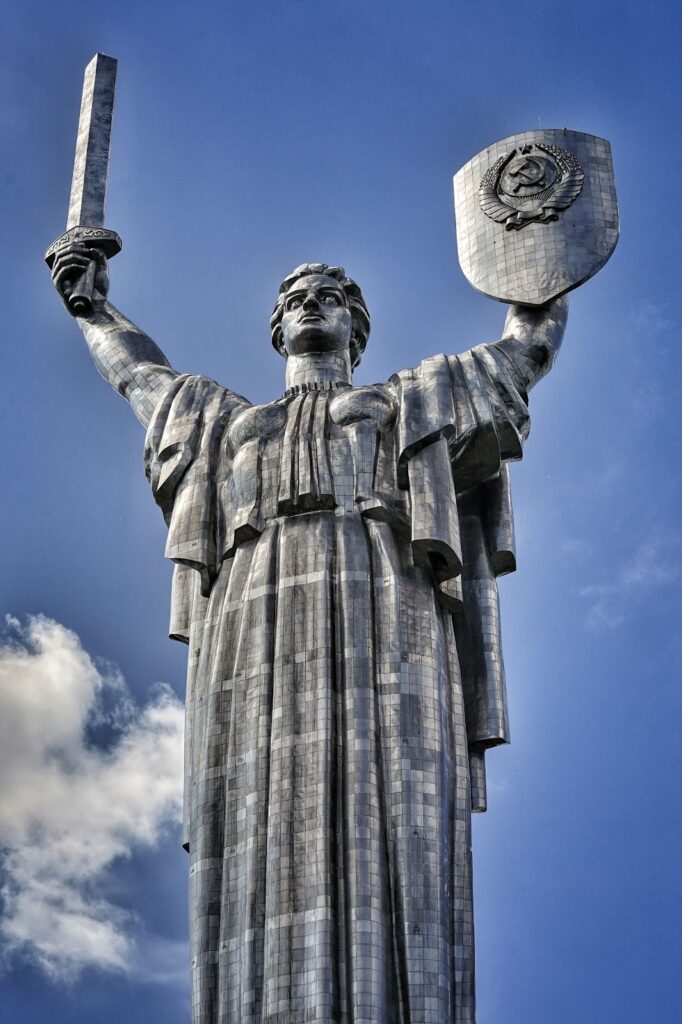
Motherland Monument
Construction of the statue began in 1979 and was officially opened in 1981. There was some controversy surrounding the statue at around the time of its inception because some people thought the money required to build it could be spent more effectively elsewhere.
It has remained a controversial subject until the present day, in part because of the Soviet symbol of a hammer and sickle on the statue’s shield. Soviet and Communist symbols were outlawed by the Ukrainian Parliament in 2015, but this ban does not apply to World War II memorials. This is still under debate in Ukraine.
National Opera and Ballet Theater of Ukraine
Often considered to be the country’s most beautiful theater, the National Opera of Ukraine was constructed in 1856 and officially established in 1867. It is known for its beautiful facade and for the numerous famous performances that have taken place inside under both Soviet and Ukrainian control.
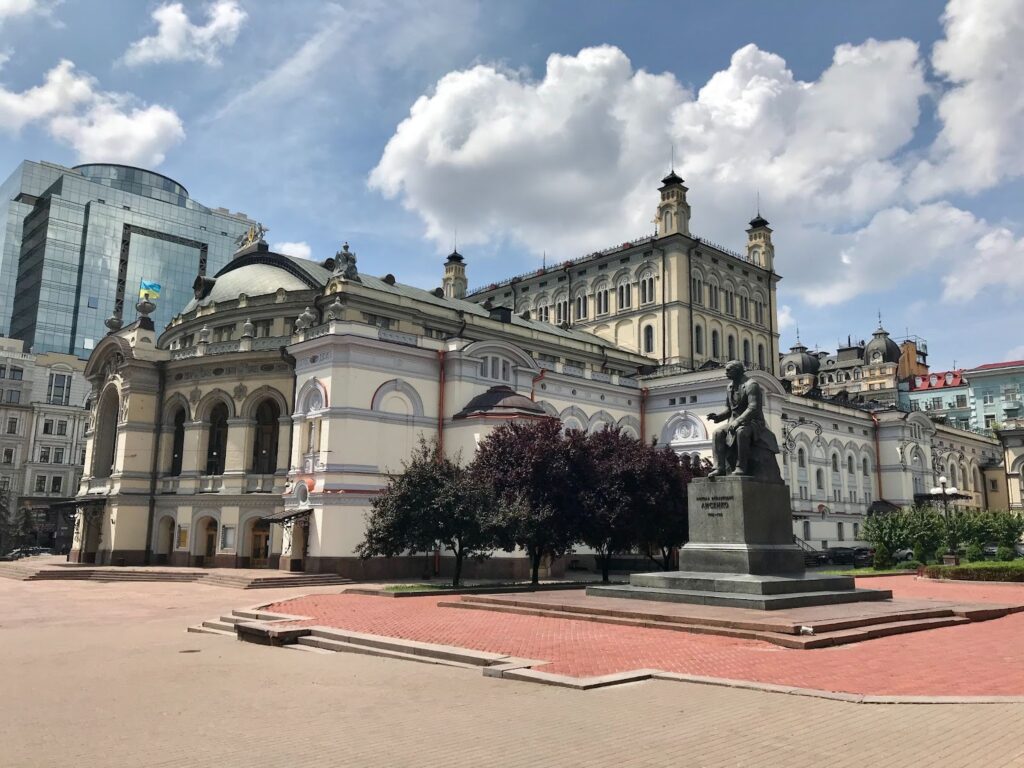
Mystetskyi Arsenal
Look no further for your fix of culture than the Mystetskyi Arsenal. This massive cultural institution was once a military factory, but it’s been converted into Ukraine’s primary center for the arts. You’ll find modern art installations, music and theater performances, and much more.
Unfortunately, events have been indefinitely suspended to make efforts to keep people and important pieces of art safe from the Russian invasion. The team at Mystetskyi Arsenal issued a statement on the day Russia declared war on Ukraine.
Saint Andrew’s Church
This is another immediately recognizable feature to be found in Kyiv. The blue-and-white exterior and emerald roof on this church look out over the neighborhood of Podil and the Dnieper River from atop a hill.
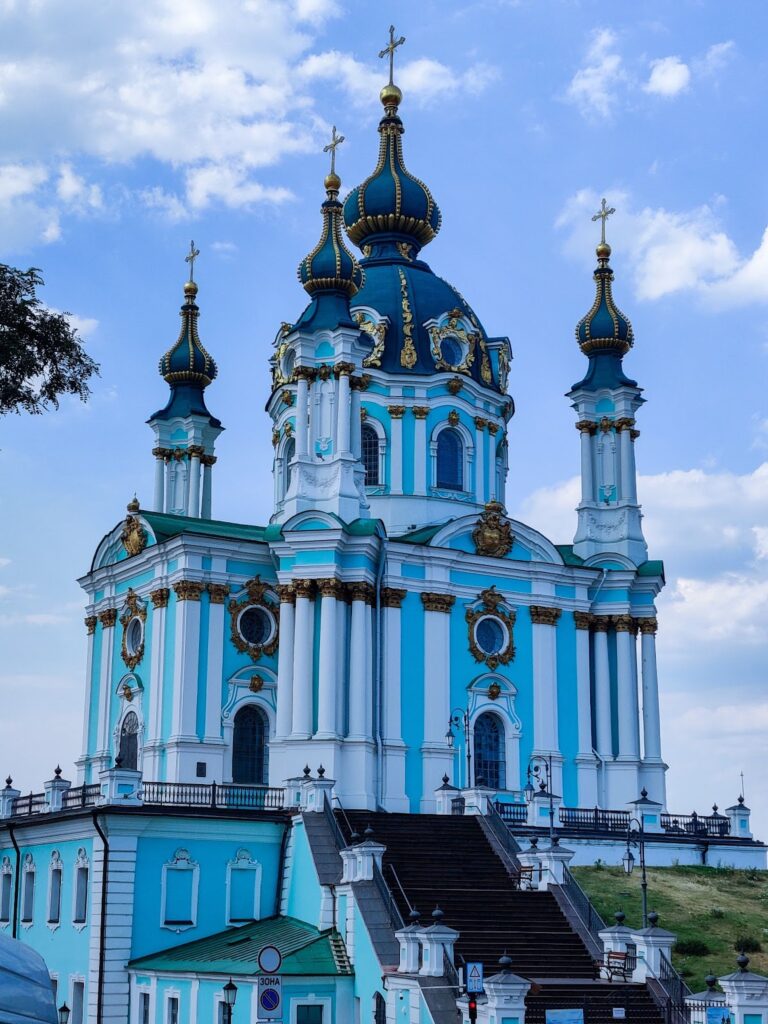
Like many sites in Ukraine, this church has seen its share of conflict and damages. It’s even been struck by lightning twice. Fortunately, the church is still standing and is currently in good condition, making it a popular place to visit among tourists in Kyiv.
Tourism in Kyiv
Tourism has steadily grown in the capital city of Ukraine since the country regained independence in 1991, but there continue to be challenges in keeping the industry alive. Tourism began to rise at a faster rate after a visa-free policy was put into place for EU-member states and Switzerland in 2005. The final match of the UEFA Euro 2012 was held in Kyiv, and this was another major attractor of tourists, both foreign and domestic.
Tourism in Ukraine reached a high number of tourists in 2019, with 2.5 million visitors from other countries. As happened in most countries around the world, tourism was greatly reduced after the beginning of the coronavirus pandemic in 2020.
In 2021, tourism in Kyiv and Ukraine was on the rise and expected to continue its upward trend, but this came to an end with the beginning of the Russian invasion of the country in February 2022.
All civilian flights into and out of Ukraine have been suspended, and it is no longer considered a safe destination for tourists.
The lack of tourism in the foreseeable future is just one of the many ways Ukraine will continue to face economic difficulties caused by the Russo-Ukrainian war.
Foreigners still in the country can refer to this resource to get up-to-date safety information in Ukraine.